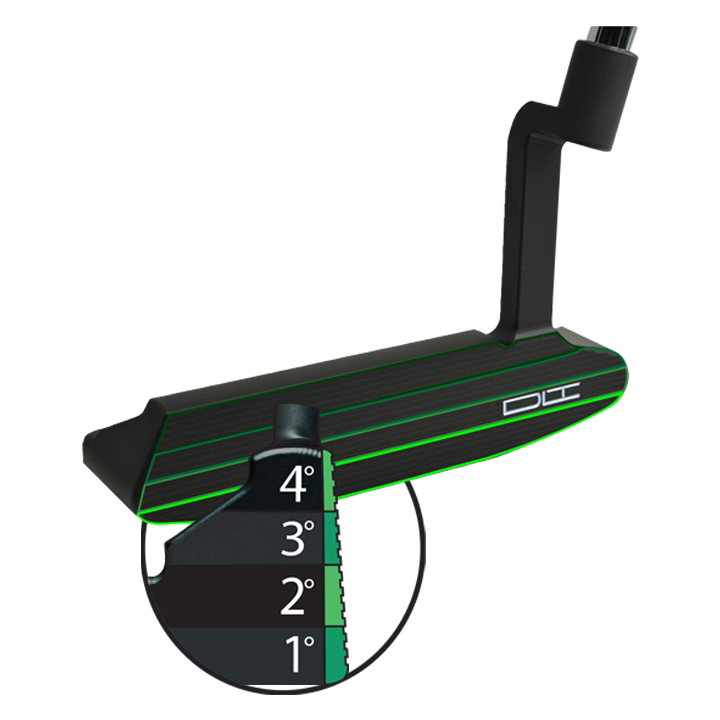
Every breaking putt starts off straight before slope of the green influences its’ path. How long the ball actually rolls straight before slope causes it to deviate depends on speed. Eight putts of the same speed but different launch angles will result in eight different paths.

According to top putting instructors, the average professional golfer impacts the ball with the same shaft angle from address to impact approximately 20% of the time. Manipulations of the shaft before or during your putting stroke, such as forward press, can cause inconsistent launch angles, affecting consistent distance to true roll. SIK putters compensate for the effect of shaft angle putters with DLT producing consistent variations at impact with patented launch angles from putt to putt.

Our landing surfaces (actual point of contact with the golf ball) are slightly wider than the width of our grooves. This larger surface area adds enough grip to the ball to control over-spin while at the same time reducing dimple effect and side spin.
 Approximately 95% of the golf balls’ initial direction is determined by putter face angle at impact. The path of the putter (i.e. arcing, square to square, etc.) accounts for only 5% of the balls’ initial path. Consequently, on an 8 foot putt, if the face of the putter is more than 1 degree open or closed to your target line at impact the ball will not go in.
Approximately 95% of the golf balls’ initial direction is determined by putter face angle at impact. The path of the putter (i.e. arcing, square to square, etc.) accounts for only 5% of the balls’ initial path. Consequently, on an 8 foot putt, if the face of the putter is more than 1 degree open or closed to your target line at impact the ball will not go in.

Our Strong Side process is done in accordance to Rule 4-1b of the Rules of Golf (USGA) with all SIK Golf custom milled putters. We identify any shaft asymmetries, then utilize our proprietary process installing the shaft in the Strong Side orientation. This allows the putter to remain square at impact, reducing deflection (bending and twisting) on off-center hits.
According to the USGA, “Shaft manufacturers have not yet been able to maintain tolerances which eliminate asymmetries in bending and twisting of the shaft. The Committee has therefore concluded that the process of orienting a shaft with the intent of causing it to perform as if it were symmetrical would not be inconsistent with Rule 4-1b.”